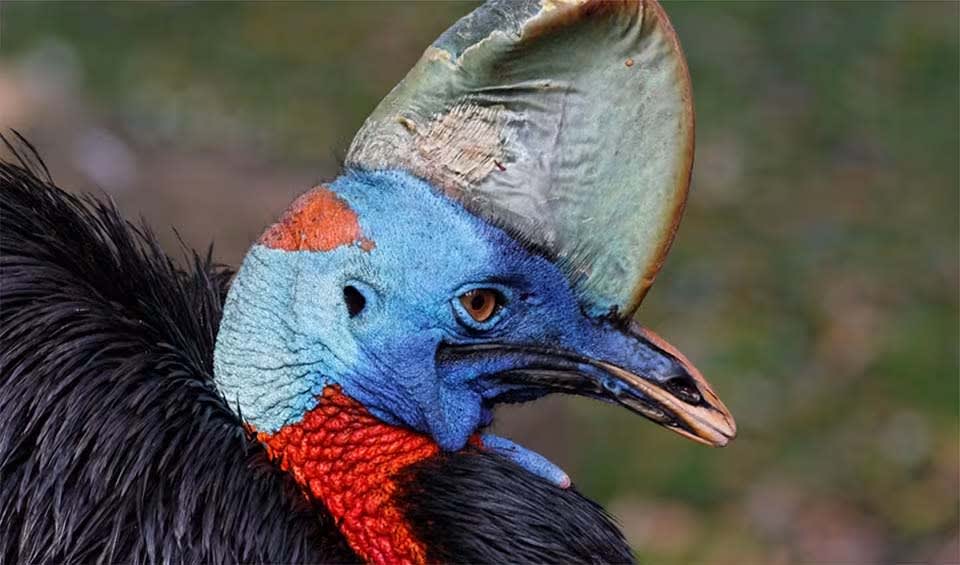A majestic and striking bird that calls the dense lowland rainforests and coastal swamps of Papua New Guinea its home. This species is one of the lesser-known cassowaries, partly due to its reclusive nature and the inaccessibility of its habitat.
Adorned with a remarkable bright blue head and a distinctive casque—a horn-like crest—on the top, the Northern Cassowary is an exemplary product of evolution. The casque’s function is still debated among scientists, with theories suggesting it may play a role in everything from mate attraction to a sign of dominance. Additionally, this bird is characterized by a yellow-reddish neck and a single, pendulous wattle that adds to its unique appearance.
Despite their imposing size and powerful build, Northern Cassowaries are typically shy creatures, often avoiding human contact. Their elusive nature has made scientific studies challenging, but it is known that they play a crucial role in their ecosystems as seed dispersers. They are primarily frugivorous, consuming a variety of rainforest fruits, which they then distribute throughout their territory. The digestion process of the cassowary often aids in germinating the seeds, making these birds vital for maintaining the diversity and health of their rainforest homes.
Reproductive behaviors of the Northern Cassowary are equally fascinating. Males take a leading role in parenting, a rarity in the bird world. After the females lay their eggs, it is the male who incubates them and, after hatching, raises the chicks for approximately nine months. The nests are usually a simple scrape on the ground, artfully camouflaged with leaf litter and vegetation to protect them from potential predators.
Unfortunately, the beauty and uniqueness of the Northern Cassowary are matched by the grim status of its population. Estimated numbers of 10,000 to 20,000 individuals are declining rapidly. The primary causes of this decline are hunting—both for meat and the birds’ distinctive features, such as their feathers and casque—and habitat loss due to human activities.
Distribution
 Indonesia
Indonesia Papua New Guinea
Papua New GuineaAnything we've missed?
Help us improve this page by suggesting edits. Glory never dies!
Suggest an editGet to know me
Terrestrial / Aquatic
Altricial / Precocial
Polygamous / Monogamous
Dimorphic (size) / Monomorphic
Active: Diurnal / Nocturnal
Social behavior: Solitary / Pack / Herd
Diet: Carnivore / Herbivore / Omnivore / Piscivorous / Insectivore
Migratory: Yes / No
Domesticated: Yes / No
Dangerous: Yes / No




